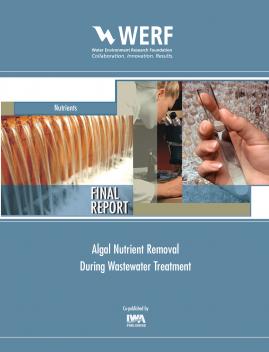 |
Algal Nutrient Removal During Wastewater Treatment
Algal Nutrient Removal During Wastewater Treatment

While major improvements in wastewater treatment have reduced nutrient loading to natural receiving waters, current limits of technology preclude further nutrient reductions using established processes. New, cost-efficient and easily adaptable approaches to wastewater treatment must be designed to reduce total nitrogen (N) and phosphorous (P) in effluents from water resource recovery facilities (WRRFs) further. Our research goal is to develop phycoremediation strategies that employ phytoplankton to remove N (and P) from treated effluents prior to discharge. To make phycoremediation viable within municipal WRRFs that operate at high flow rates and have short in-plant hydraulic residence times, wash out of algal biomass must be prevented, algae must be easily separated and removed from the treated effluent before discharge, and sufficient algal biomass must be retained within or returned to the reactor to ensure stable algal populations within the plant. Therefore we employed immobilization techniques that allow for ease of removal of the algae while removing nutrients at high rates. Results show removal efficiencies up to 100% for nitrate, nitrite, and phosphate with a hydraulic retention time of 6.5 h. These high reduction efficiencies were achieved by incorporating wavelength specific submersible LEDs, maintaining a constant pH, and with constant mixing.
Also available as part of your Water Inteligence Online subscription
Publication Date: 01/10/2015eISBN: 9781780406749Pages: 90 |
Print:
|